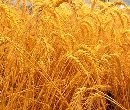Codex extends aflatoxin code based on new Brazil nuts data
The report of the Codex Committee on Contaminants in Foods was considered at the 33rd Session of Codex Alimentarius Commission this week, which was attended by 500 delegates from about 130 member countries.
The delegates agreed to set a maximum level of 10 mg/kg for aflatoxin in Brazil nuts (shelled, ready-to-eat) and 15 mg/kg for shelled Brazil nuts (intended for further processing).
Dr Angelika Tritscher, secretary to Joint FAO/WHO Expert Committee on Food Additives and Contaminants (JECFA) and the Joint FAO/WHO Meeting on Pesticide Residues (JMPR) told BakeryandSnacks.com that Brazil nuts were not included in earlier standards on tree nuts adopted by the Commission due to the fact there was insufficient data at the time on aflatoxin contamination levels in these as they are not a plantation crop.
She said that the additional measures on Brazil nuts were sought by the delegation from Brazil, who cited the recent completion of the Standards and Trade Development Facility (STDF) SafeNut Project which addressed the factors causing aflatoxin contamination in the Brazil nut production chain and the methods of control available.
The Brazilian delegates requested that, in view of the fact that these nuts are not cultivated, a certain degree of flexibility should be included in the Codex standards to allow to for factors such as distance between the collection and the manufacture points and weather conditions, that may affect the collection of the nuts and their transport to processing plants.
The Commission said that the text was amended accordingly to accommodate those points and also announced that sampling plans for total aflatoxins in Brazil nuts should be integrated into the sampling plans for aflatoxin contamination in ready-to-eat tree nuts and tree nuts destined for further processing.
Aflatoxins are highly toxic substances naturally formed by the fungus Aspergillus flavus on foodstuffs, particularly nuts and dried fruit grown in warm humid conditions.
They have been shown to be carcinogenic in animals, and aflatoxin B1, the most toxic, is classified as both a human carcinogen and mutagenic.
This type of contamination is an issue that has garnered increasing attention in recent years.
Various studies of good practices that may control contamination before and after harvest have been conducted in conjunction with farmers. Researchers have pushed forward the concept of a contamination risk analysis system, based on the 'from farm to fork' concept, at every stage of the production chain.








